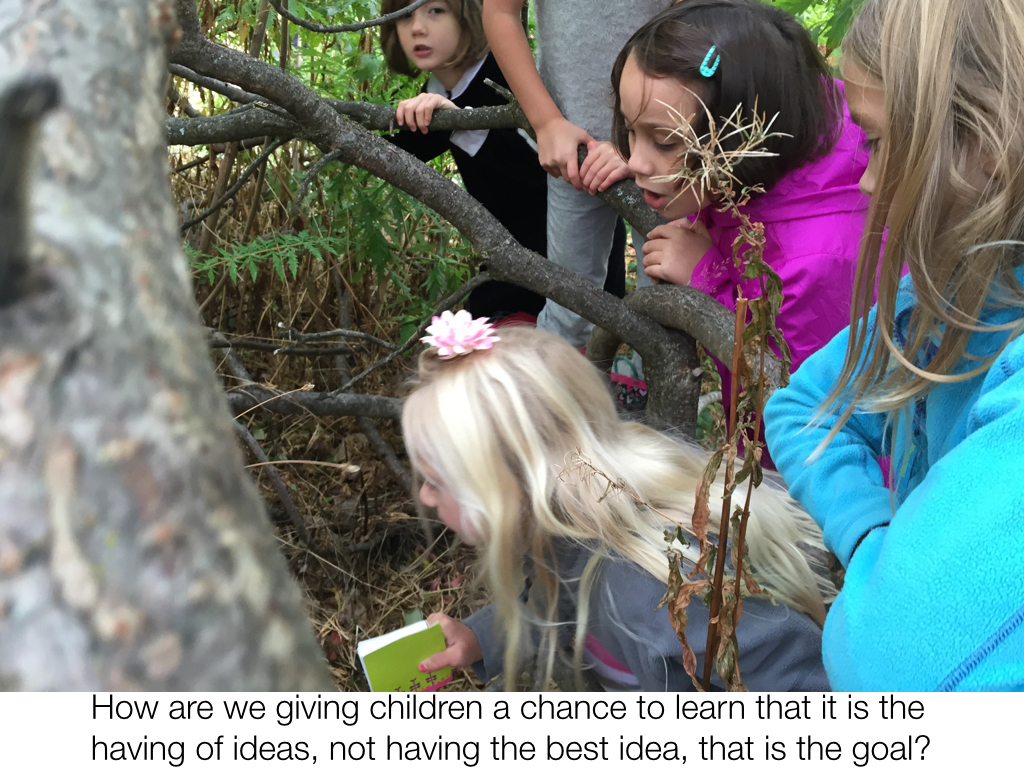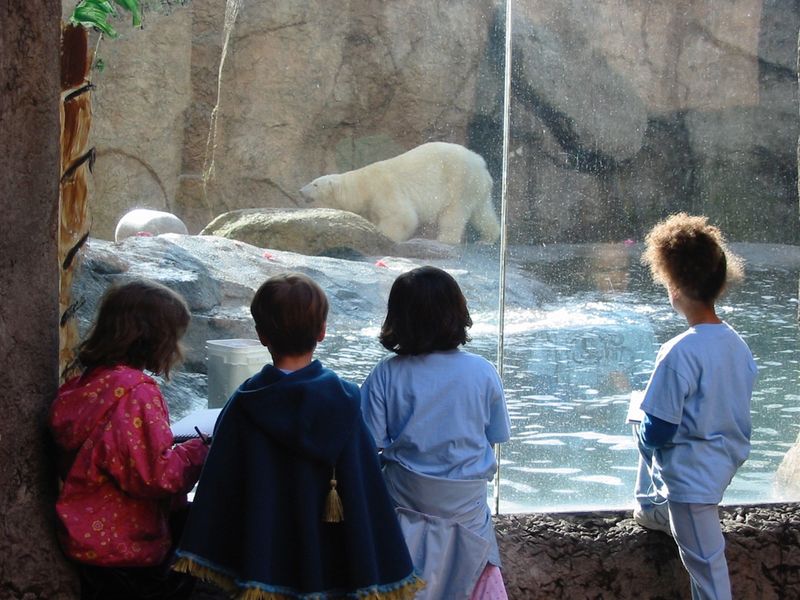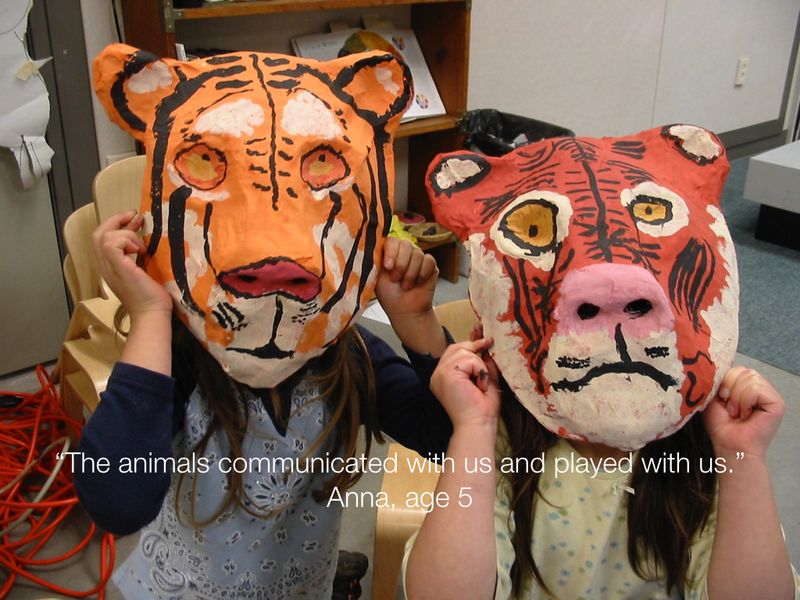What does holding a strong image of the child mean in a complicated world?

At the end of September, Matt Karlsen and I spoke to several groups in the Vancouver area about conditions that support playful inquiry. Over the last few years, educators in British Columbia and Alberta have shown a great deal of interest in Opal School’s work: it responds to their curiosity about the intersection of inquiry and the arts.
When we invite educators to Opal School, they’re completely immersed in children’s ideas. When we lead workshops in distant districts, we carry those voices and images through photographs, transcripts, and video. One video that we’ve found helpful over the years is Inquiry into Wild Animals, which tells the story of teacher-research and emergent curriculum over the course of a year. It is a story that begins when the teachers recognized the children’s curiosity about wild animals and decided to support and sustain it.
As the children energetically studied the animals, they kept asking about the zoo across the parking lot. What was the experience of these neighboring animals? Were they sad to live in captivity? How would they feel if wild animals came to visit? Their teachers weren’t sure what to make of that final question – they had a more limited imagination for what was to come than the children themselves. The children, though, already knew.
Rather than showing the entire documentary at our sessions in Vancouver, we chose to include just the culminating clip. In that montage, the students, cloaked in animal masks they had designed, went to the zoo and connected with the animals. When we’ve shown the larger video, educators frequently reply to this sequence overcome by emotion: they see that, by listening so carefully to the children’s interests and curiosities, the teachers were able to create an opportunity for them to pursue these ideas in spite of their own lack of imagination. For a range of reasons in these sessions, however, the reaction was different: many of the 400 or so Canadian teachers we were working with were disturbed by the depiction of the caged animals. These scenes overwhelmed their ability to consider the learning opportunity for the children – and our ability to discuss it as we had expected. So we entered into inquiry, nervously setting our agenda aside, and asked more questions, uncovering some new ideas about these approaches that we may not have fully understood until then.
Zoos exist. The Oregon Zoo is our neighbor, living across the parking lot from us. Opal School children walk past it every day, regularly enjoying its gifts. We can argue their morality all day long. We can teach children to believe what we believe. And we can raise them and prepare them to take sides.
Alternatively, we can choose to create opportunities for third doors to emerge. In spite of the fact that the teachers didn’t fully understand what was driving the children, they chose to support their innate empathy and take them into the closest contact with the zoo animals that they could create.
I believe that the surprising things that happened through this imaginative, uncertain, playful experience will serve to inform the children for the rest of their lives. I believe that this was a transformative learning experience for all involved.
Perhaps by providing room for empathy to blossom, rather than telling the children what we believe is right and wrong, children will grow up to develop solutions to big problems that we haven’t thought of yet: solutions that we cannot think of because we never had those opportunities ourselves. And this is what we were able to understand more because of our visit with teachers in Canada. The majority of those teachers think that zoos are wrong. And they assumed, because of this video, that we condoned them. But assuming that children need and are waiting for us to provide them with “The Truth” underestimates the powerful capacities of children. It undermines the development of new ways to live together in the future: because it limits play and curiosity, it limits genuine inquiry.
Having a strong image of the child means understanding that children who visit zoos are considerate of the complexity of caging wild animals.
Having a strong image of the young human being means understanding that empathy is hard-wired from the beginning and we can trust it to guide us. We can get out of its way. It wants to explore. We short-circuit its development by substituting our own version of right and wrong, by continually rewarding the right and shaming the wrong.
Last week, we were all shattered by yet another mass shooting. As we desperately seek to respond to the catastrophe, it’s important to remember that the municipal preschools of Reggio Emilia were built from the rubble of World War II: they were considered to be an antidote to fascism. The work we’re doing is rooted in a commitment to building a world with greater possibilities – greater justice – than the one these children have been born into. Open, playful inquiry is messy work – because it exists within a messy planet. And it’s important work – because the world needs the gifts these children bring to creating a better one.



Thanks for this perspective. We should never forget to respect the children’s ability to process emotion. The best we can do is elevate our communication with them. They deserve our best!